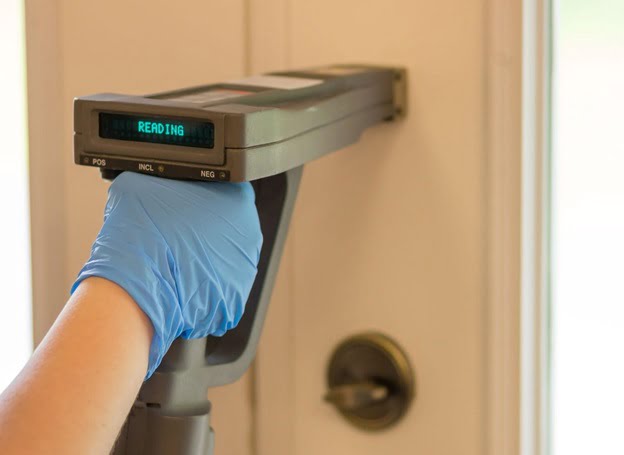Easy Remedies for Interior Paint Failures

Isn’t it frustrating when you see the interior wall paint in your home peeling, blistering or cracking? Then there are times when the colour seems to be darker or thicker in patches. Such painting failures can be avoided by using experienced professionals, such as Berger Express Painting, for all your home painting needs. These failures can also be signs of underlying issues. For instance, without adequate home waterproofing, painting failures will occur.
So, here are some common paint failure problems and easy remedies for their cure.
Chalking
Low-quality paint can lead to the formation of chalky powder on the wall surface. Long-term exposure to sunlight and moisture might also result in this. This can cause colour fading. Severe chalking also makes repainting a tedious process. Here are some ways to deal with chalking paint defects.
- Pressure washing or sand-blasting can help remove the residue in severe cases. A stiff brush with a mild detergent can also be used.
- Light to moderate chalking can be removed with wire brushing.
- If chalking is not present after this, priming is unnecessary
- However, if some amount of chalk remains, 100% acrylic paints can provide good resistance and higher bonding.
- For noticeable residue, an acrylic masonry primer is a must. Berger Paints BP Exterior Cement Primer offers excellent whiteness and opacity. You can choose Berger interior paint emulsion after that for luxurious sheen and long-term durability.
Fading
If you choose interior wall paint for exterior surfaces, the harsh weather elements cause colour fading. Fading also takes place due to chalking. Make sure to get exterior walls repainted with a product that offers high durability, water repellence, dirt resistance, and prevents chalking. Make sure to apply a good primer undercoat.
Blistering
When you see paint bulging or forming blisters on the wall, you need to check the moisture inside the substrate. This could also be due to exposure to dew, rain, or high humidity shortly after application. To get rid of this painting failure:
- Install vents or exhaust fans
- Do not get your house painted during the rainy season or in extreme heat
- If blisters subside, remove the moisture source and waterproof your walls before repainting.
- Use a high-quality topcoat only after you remove the source of moisture and make the surface water repellent.
Consult professional home waterproofing experts from Berger Express Painting services. The Berger Home Shield experts use a scientific moisture meter to gauge moisture levels and then recommend the most suitable solutions.
Paint Cracking/Crazing
Cracks through at least one coat of interior wall paint is a sign of painting failure. There are many causes for this, including improper surface preparation, water leakage, painting in dry conditions, and more. To remedy paint cracking:
- The painter should use a scraper or wire brush to remove loose paint if cracking doesn’t extend to the substrate.
- After using sandpaper to smoothen the surface, the bare spots should be primed.
- If the cracks extend to the substrate, all of the previous paint should be scraped with sandpaper. Your painter might use something like Berger Crack Fill Paste on plastered surfaces to fill in gaps, improve adhesion and offer flexibility.
- After using a high-quality primer, the painter should use a suitable topcoat for the best finish.
Efflorescence
Crusty white crystals might look good on pretzels but not on a painted wall in your home. This happens when salt particles in mortar, concrete, or brick dissolve in moisture and migrate to the surface. To take care of this problem, experienced painters will:
- Use a low-pressure washer, wire brush or scraper to remove the salt deposits. They can also clean the surface with diluted white vinegar or trisodium phosphate solution. One should wear protective gear to handle this solution, which is why you should leave this to professional painters.
- Get rid of moisture conditions through scientific waterproofing solutions. The experts will repair cracks and use putty to make the surfaces uniform and smooth.
- Use a water repellent sealant to prevent moisture absorption. Silicone and acrylic paints can prevent efflorescence. Berger Seal-O-Prime exterior primer is a great example of such a product.
Mildew
If you notice grey, brown or black spots on the wall, it is a sign of fungal growth. This is a problem in areas with high dampness, where sunlight penetration is low. Consult experts to deal with this problem immediately, since it is a huge health hazard.
- Less severe cases may be dealt with a mixture of water and bleaching powder in a specific ratio. The solution is left for half an hour, after which the area is rinsed.
- The painter might scrape the surface with sandpaper to remove fungal growth.
- Adequate waterproofing methods could be needed to remove any major sources of water infiltration.
- After that, a good primer and high-quality interior wall paint can be used. It’s best to use paint with anti-microbial properties.
With Berger Express Painting services, you can consult highly skilled painters who are well versed in taking care of such paint failures. They will suggest the right products, do a site inspection and provide accurate cost estimates. You can access all this on the Express Painting app, with which you can book services, browse through products, pay, access invoices, and more. The app will also let you track your painters’ daily body temperature and symptoms for a safe painting experience.




